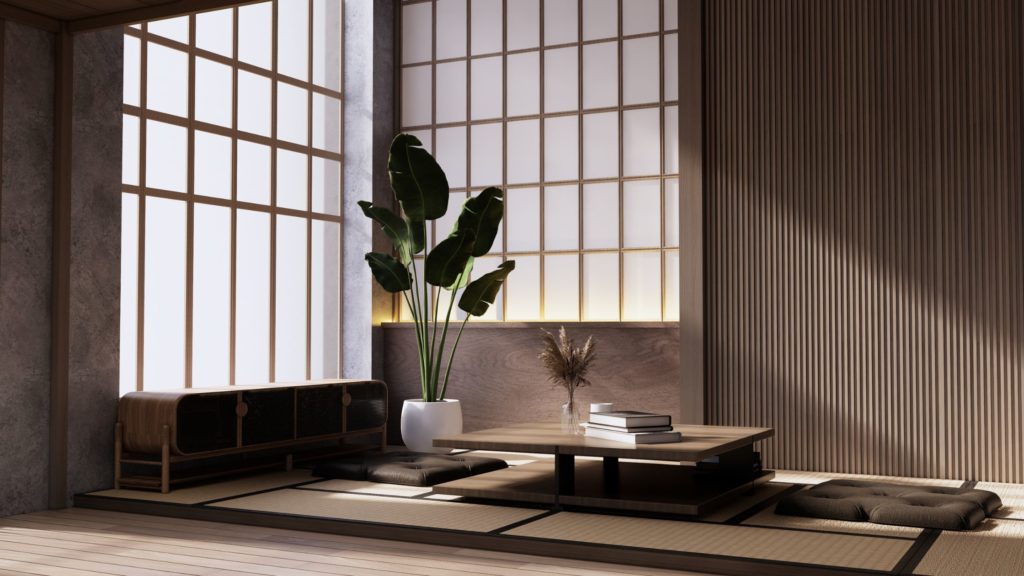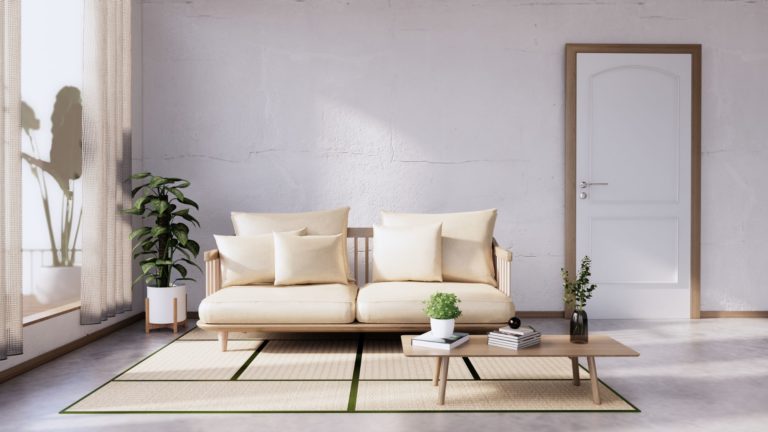The world of interior design is always evolving. New styles emerge, old ones are revitalized, and sometimes, two seemingly disparate aesthetics combine to create something completely fresh. Japandi, a design trend that has steadily gained traction over the past few years, is the perfect example of this. A seamless blend of Japanese minimalism and Scandinavian design, Japandi has captured the hearts and imaginations of designers and homeowners alike. But what exactly is it about this fusion that has made it so popular?
Japanese Minimalism: The Art of ‘Less is More’
Japan’s design ethos can be summed up in one word: simplicity. Rooted in Zen Buddhism, Japanese minimalism is all about the “less is more” philosophy. It emphasizes decluttering and creating spaces that are both functional and aesthetically pleasing. Every item in a Japanese-inspired room has a purpose. This results in spaces that feel calm, peaceful, and harmonious.
Traditional Japanese homes often incorporate natural elements, like wood and stone, and favor a neutral color palette. Furniture tends to be low-slung and simple in design. The ultimate goal? A space that is in harmony with nature, where one can find tranquility and peace.
Scandinavian Design: The Warmth of Hygge
On the other side of the Japandi coin is Scandinavian design. Originating from the Nordic countries, this style is characterized by its functionality, simplicity, and connection to the natural world. Like Japanese design, there’s an emphasis on craftsmanship and the use of natural materials.
However, where Japanese minimalism can sometimes feel a bit stark, Scandinavian design introduces a touch of warmth. This can be attributed to the concept of ‘hygge’ (pronounced “hoo-gah”), a Danish term that encapsulates a sense of coziness, comfort, and well-being. Soft textiles, like knitted throws and plush cushions, combined with ambient lighting, create spaces that are not only beautiful but also incredibly inviting.

Japandi: The Perfect Marriage
So, what happens when you merge these two design philosophies? The result is Japandi: a style that manages to be both minimalist and cozy, blending the best of both worlds.
The neutral color palettes of both styles meld perfectly. Soft grays, muted blues, and gentle browns create spaces that are soothing to the eye. Furniture, whether it’s a sleek Japanese table or a plush Scandinavian sofa, is chosen for both its functionality and its design. Items that don’t serve a purpose or bring joy are discarded, leaving only those that truly matter.
Natural materials are a cornerstone of Japandi. Woods like oak, walnut, and ash, which are staples in both Japanese and Scandinavian designs, feature prominently. These are often complemented by stone accents and plenty of greenery, further emphasizing the connection to nature that both styles hold dear.
One of the most striking features of Japandi is the way it balances contrasting elements. The starkness of Japanese minimalism is softened by the hygge elements of Scandinavian design. Similarly, the potential coldness of modern Scandinavian spaces is warmed up by the organic, natural feel of Japanese interiors.
The Global Appeal of Japandi
In our increasingly globalized world, it’s perhaps no surprise that a design trend like Japandi, which merges two distinct cultures, has found such widespread appeal. It speaks to a universal desire for homes that are serene yet cozy, minimalist yet inviting.
Moreover, in an age of environmental concerns, Japandi’s emphasis on sustainability, natural materials, and timeless designs resonates deeply. Instead of disposable, trend-driven décor, Japandi encourages investment in pieces that are built to last and that have a minimal environmental footprint.
Craftsmanship: A Shared Reverence
Both Japanese and Scandinavian cultures exhibit a deep-seated appreciation for craftsmanship. Their respective histories are filled with artisans dedicated to perfecting their skills and producing items of impeccable quality, whether it’s the intricate details of a Japanese tea set or the sturdy build of a Scandinavian wooden chair.
In Japandi design, this shared reverence is evident. Craftsmanship is not just about durability; it’s about creating pieces that tell a story. Handmade ceramics, handwoven textiles, and meticulously carved wooden furniture play pivotal roles. These items not only serve functional purposes but also act as conversation starters, linking the past to the present and infusing spaces with a sense of history and culture.
Incorporating handcrafted pieces in a Japandi space adds depth and character. Each scratch, dent, or imperfection is a testament to the artisan’s journey, making the space feel lived-in, authentic, and deeply personal.
Balancing Act: Finding Equilibrium in Design
The essence of Japandi lies not just in the individual elements but in the way they come together. The delicate act of balancing the two distinct styles is what makes Japandi truly unique.
In Japandi interiors, balance is key. It’s not just about juxtaposing a minimalist Japanese screen with a plush Scandinavian rug but ensuring that these elements coexist harmoniously. This requires a keen eye for design and an understanding of the principles of both styles.
For instance, a room might have the sleek lines characteristic of Japanese minimalism but is anchored by a chunky, Scandinavian wooden table. Or, a sparsely decorated space might feature a single, vibrant piece of Scandinavian art, adding a pop of color without overwhelming the room.
Achieving this equilibrium ensures that Japandi spaces feel neither too barren nor too cluttered. Instead, they offer a sanctuary where every piece has its place, and every design choice is intentional, paving the way for a harmonious living experience.
In Conclusion
Japandi is more than just a design trend; it’s a lifestyle choice. It encourages mindfulness, an appreciation for nature, and a focus on the truly essential. By blending the simplicity of Japanese design with the warmth of Scandinavian interiors, Japandi offers a fresh take on minimalism, proving that it’s possible to have spaces that are both sleek and cozy. As the world continues to evolve and merge, it’s exciting to think of what other beautiful fusions the future might hold.


